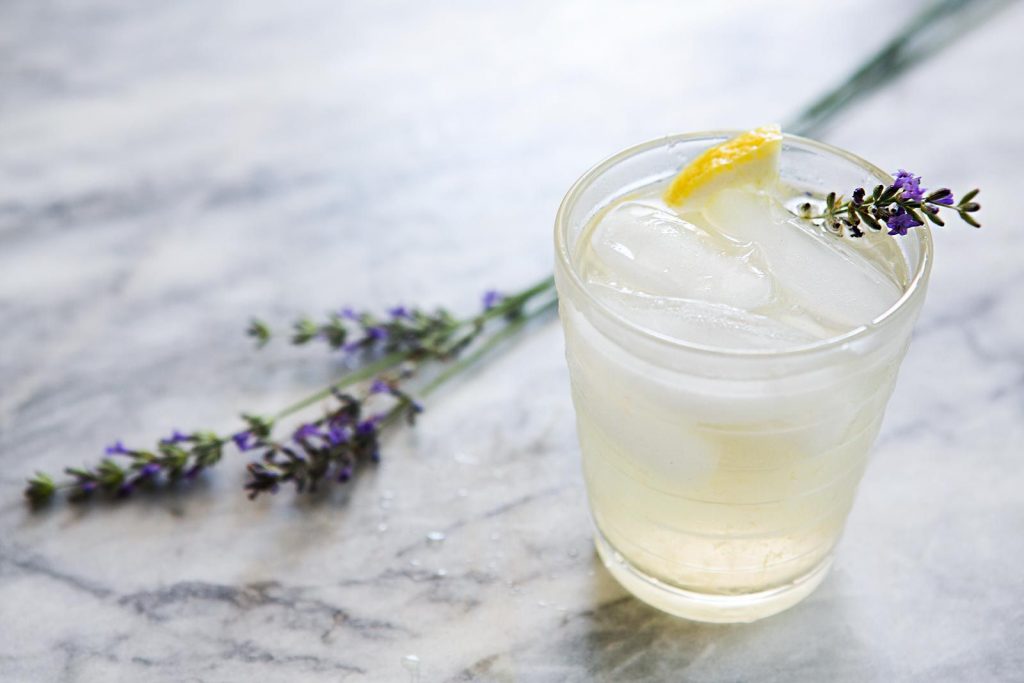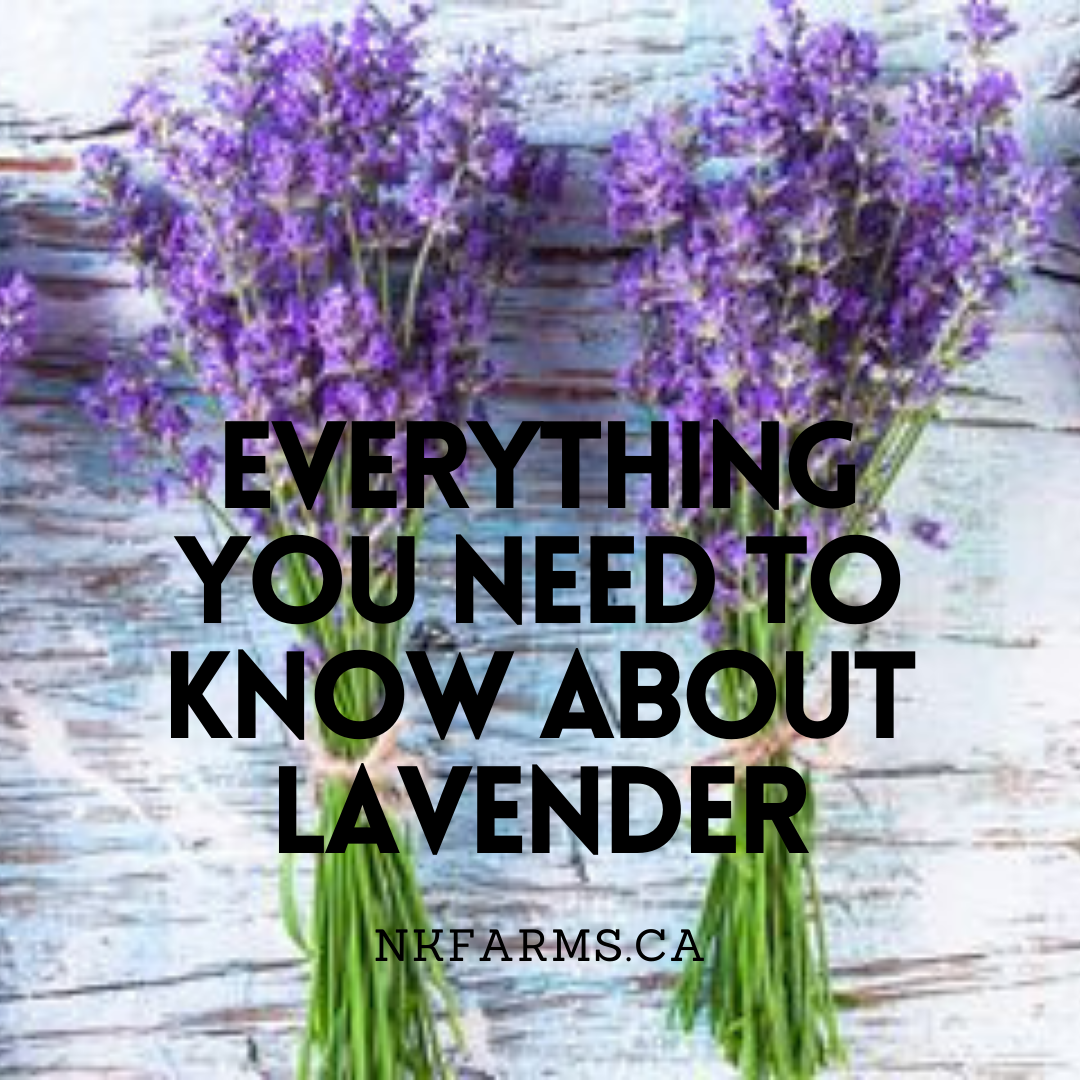Lavender is one of my most treasured plants here at Naturally Knotty Farms. It versatility, beauty make it a staple here on the farm. Up here in the northern climates, it is best to grow English Lavender because of it’s hardiness. Any other type will not survive our harsh Canadian winters. There are several different types of English Lavender (too many to list here), but I’m sure you will find one that suits your needs. French Lavenders are not well suited to our Canadian climate.
Planting & Care of Lavender
When growing Lavender, be sure to choose a site with well-drained soil and at least 6 hours of sunlight. The roots do not like to be wet, so if your soil is heavy clay, be sure to add ample mulch into the hole before inserting your plant. Plant 12″ apart or more depending on the variety of Lavender you have chosen.
New plants are small and may require some mulched straw around the base of the plant to help it survive our winters.
Container or Indoor Lavender
Lavender will grow well in pots in the right conditions. Choose a pot that is 2″ – 5″ larger than the root ball. The pot must have good drainage and choose a growing medium that drains well. A soilless mix works best; peat, vermiculite and perlite will work well and can be found at any reputable garden center. If roots are soggy for any length of time, a root rot will quickly develop and will kill your lavender.
Container-grown lavender can be outdoors all summer long. During the summer the plants will need plenty of water and fertilizer. Apply a liquid fertilizer of 20-10-20 about once a month. After bringing them inside in the fall, give lavender a lot of sunlight. Stems will weaken without enough sun. Artificial light indoors can work well and you may be rewarded with mid-winter blooms.
Pruning
Pruning lavender, whether in pots or in the ground, will keep them attractive. as much as 1/2 of the stem length can be taken off without any damage to the plant. Frequent pruning may delay blooms, so it is best to prune in early spring before blooming or late fall when the flowers are done. A small hedge of well-clipped lavenders make as excellent border for a small herb or flower garden.
Harvest
One of my favourite aspects of growing Lavender, has to be harvesting! The lovely, fragrant blooms are especially easy and rewarding to harvest as they hold up well with little care. Choose to harvest when the flowers are out, but not fully open. Harvest in the morning just after the dew has dried. This is so the essential oils (what gives the plant its fragrance) won’t lose their quality when exposed to the heat of the sun. It is best not to pick when the plant is still wet as it will take longer to dry. Cut the stalk below the flower, where it meets the leaves and the stalks tied in bundles and hung to dry in a dry, airy, warm place without any direct sunlight.
You may choose to leave the dried flowers on the stalks as a decorative piece or, as I do, remove the flowers from the stem. Store your flowers in a dark, air-tight glass container for use later.
Uses
Medicinal Uses
This plant has been highly regarded for its medicinal properties for years. Just smelling the fragrance is said to relieve headaches and it has been believed to cure everything from cramps, migraines, tremblings and even a broken heart. Personally, I have found Lavender Essential Oil on my temples as the best way to relieve a migraine. It is also great for easing the itch of a sting or insect bite. I also use the essential oil as a sleep aid by rubbing it on the ball of my big toe at bedtime. The fragrance of the flower is said to be calming and can ease anxiety or stress.

Dream Pillow
- 1/2 cup dried Lavender
- 1/2 cup dried Hops
- 1/2 cup dried Lemon Balm
Mix all ingredients and fill a small cotton or muslin bag. Place under your pillow for a restful sleep.
This also make an excellent gift for anyone recovering from illness or injury.
If your child struggles with Anxiety, give them a bag to carry in their pocket.
Cooking
Yes, Lavender is classified as an herb and is edible. As most of you know, I make Lavender Jelly with some of my dried flowers. I will share the recipe if you comment below. Lavender pairs well with Lemon, so adding it to your sugar cookies, lemon bars or other lemony deserts will create a delicate floral hint to your baked goods.

Lavender Sugar
- 1 cup of granulated sugar
- 1 tbsp dried lavender
Add lavender to a food processor and grind to a fine powder.
Add in sugar and mix to combine well.
Store in an air-tight glass jar.
Making your own lavender sugar is so easy, you might find you always want to keep a jar of it at hand. It can be added to beverages (try it in lemonade or tea) and baked goods, as well as whipped cream and butter.
This recipe can be easily scaled up or down. If you make a large quantity, it’s easiest to do in smaller batches in the food processor.
There are many other ways to incorporate lavender into your cooking or baking. Lavender cookies are a simple sugar cookie lightly flavoured with lavender and they are dreamy!

Lavender Lemonade
The perfect, refreshing drink on a hot summer day!!
Steep 1/2 cup of dried flowers in a quart of boiling water for about 5 minutes. Strain & use the liquid to make up part or all of the liquid when making frozen lemonade from concentrate. Garnish with a sprig of fresh lavender to impress your guests.
Crafts
You can use lavender sachets in your drawers to keep your clothes smelling fresh or make a larger sachet to cover your electric heating pad. Add the dried flowers to your bath water for a relaxing soak after a long day, stressful day.
The possibilities are endless. Please comment below with your favorite way to use lavender.
- How to Make Your Own Jam
- Calendula – Why & How to Grow it!
- Keep Growing – How to Identify & Care for your Seeds
- FREE Groceries – Growing Food from Grocery Store Scraps.
- 3 Simple Herbal Tea Infusions

Leave a Reply